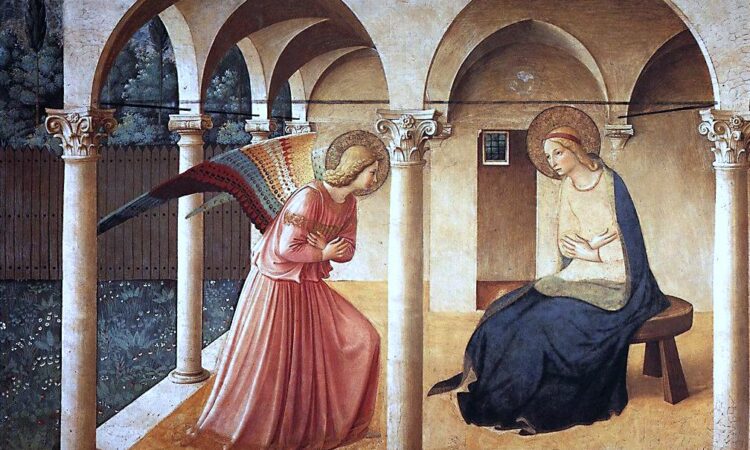Pastor Chan
Entering December, holiday decorations begin to appear on the streets, and the shops are also ready to usher in a period of peak sales. For the public, Christmas is probably nothing but a holiday of “joy to the world”. Some Christians, under this immense festival atmosphere, may have lost the focus on why the “world” can be “joyful” in this holiday season. In this issue, we will look at the altarpiece by the Italian Renaissance painter Fra Angelico — “Annunciation” — to rediscover the meaning of Christ’s coming to the world.
The “Annunciation” is recorded in Luke 1:26-38. The angel Gabriel announced to Mary that she was about to conceive and give birth to a child. Somewhat perplexed, Mary was willing to submit. The focus of the altarpiece falls on the angel wearing a splendid robe with gold wings on his back. Gloriously, he approached to Mary showing that he was the messenger from the Most High; his body leaned slightly forward, his eyes were directed at Mary, and his right hand was pointing towards her as if saying, “You are the chosen one!” and his left hand instructed her to pay careful attention to what he said. Mary’s body receded slightly. After all, it was an angel speaking to her! However, this did not prevent her from listening attentively. Mary folded her hands on her chest. Was she being flattered? Or was she feeling unworthy? Or was she willing to submit? Through the body language of the two subjects, the painter infused the action of the “annunciation” with rich dramatic elements.
It is worth noting in the painting the writing between Gabriel and Mary. The three lines from top to bottom are written in Latin, the first and third lines are the words of the angel Gabriel, “The Holy Spirit will come on you, and the power of the Most High will overshadow you.” (v35) The middle line is Mary’s words: “I am the Lord’s servant. May your word to me be fulfilled.” (v38) There are two interesting points here. First, the sentences were written upside down, implying that although Mary spoke to the angel, the recipient of the response was actually God looking down from the sky. Second, the original sentence was slightly longer. The painter only wrote “I am the Lord’s servant” and “Your word”, omitting the middle “May … to me be fulfilled.” This makes one wonders if the artist was trying to convey a message that even if there were the Lord’s disciples or the Word of God, the only indispensable thing is a willingness to obey.
There is also an inconspicuous scene in the upper left corner of the painting. If we pay close attention, we will find out it is the depiction of Adam and Eve being driven out of Paradise by an angel. Artists don’t have the limitations of time and space. By inserting this scene, the painter seems to remind us that “saving sinners” is the reason why the Lord Jesus was born. From birth to crucifixion, Jesus Christ paid the heaviest price for our salvation. Because of this, in Christmas, we should not say “Happy birthday to Jesus!”
The birth of Christ is not just a past historical event, nor should it be reduced to a synonym for holiday. This is a clear claim of God’s salvation, “that whoever believes in him shall not perish but have eternal life.” This is the reason why the “world” can be “joyful”. As believers, besides the designated “holiday activities”, this Christmas is a good time to reflect on the meaning of the birth of Christ, His salvation, and His calling. Are you willing to imitate Mary’s obedience and say: “May your word to me be fulfilled”?
Fra Angelico. The Annunciation. 1433-1434. Tempera on wood. 175 cm x 180 cm. Diocesan Museum in Cortona, Tuscany, Italy.

